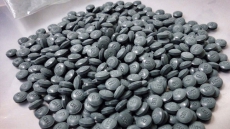SASKATOON — At least one Saskatchewan health official says fire evacuations in the north during the summer created more crystal meth problems which in turn are making the HIV situation in the province even worse.
Dr. Kris Stewart, co-director of Saskatchewan HIV/AIDS Research Endeavor, says some of his clients who were crystal meth addicts started using again when they had to leave their homes during the evacuations.
He says until then, many were stable and in treatment, but the evacuation "really unsettled a lot of people and exposed them to drugs they haven't done before and that's injected a lot of chaos into the situation."
Dr. Nnamdi Ndubuka, medical health officer for the Northern Inter-Tribal Health Authority, says the increase in crystal meth use actually stretches over the last two years.
Although crystal meth can be smoked, it can also be injected, which Ndubuka says leads to a correlation with increases in rates of HIV infection.
Crystal meth can also affect the immune system and that can accelerate the progression of HIV. It is a particularly significant issue for pregnant women using crystal meth, because the amount of the virus in their system may increase.
“When the viral load increases in their system then that increases the risk of transmission of the virus from the mother to the baby,” Ndubuka says.
“It might become difficult to get the treatment because of the chaotic lifestyle that they live when they get involved with the use of crystal meth.”

Stewart calls the situation "extremely troubling."
“We're seeing more crystal meth use than we have seen in the past," he says. “So crystal [meth] is a problem because we don't have a drug like methadone to help people get off of it. So this is a worry, it is a huge worry.”
The drug has moved from being a middle-class drug to one that affects people who are lower income, says Cory Rennie, interim manager of Addictions Services for the Prince Albert Parkland Health Region.
“We started to see little hints of it before summer started. April, May, we started to have a few clients that would come and present that they had been using this, and it's just increased since then. I'm not sure what prompted its influx into the community, but I know that it's been steadily increasing since that time.”
Stewart says there needs to be a new provincial HIV strategy and better research.
“We have to find the resources to do extra clinics if we need them," he says. "When we have people that we know are HIV positive, but are not in care, we have to do whatever it takes to get them into care. To not do so is to allow transmission to continue and I think we're missing opportunities right now."





